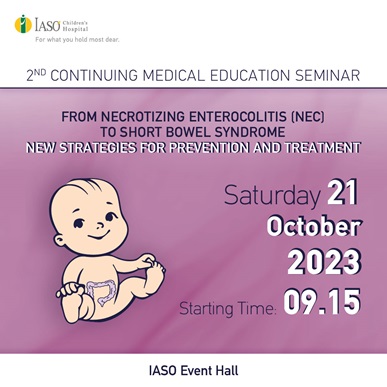
Venipuncture
What is a venipuncture?

- Blood tests
- Administration of fluids
- Administration of medication
- Blood and blood product transfusion
A venipuncture or vascular access is the process of venous catheter insertion for the purpose of gaining endovascular access, meaning access to the vein. Venipuncture is performed for:
Did you know that...
Blood circulates inside the body through several small tubes: arteries and veins. To perform a venipuncture (pinching), we must first choose a vein that is accessible under the skin.
In order to draw blood, the child must clench their fist, as shown in the image, so that more blood rushes in the veins. In addition, the nurse places the tourniquet (rubber band) as shown in the image. With the above procedure, a more effective and easier venipuncture is achieved. Depending on the age, we use a small catheter or butterfly (fine needle), with which we pierce the skin and blood flows into the vial through the needle.

Important!
- Children do not like venipunctures (pinching), therefore, the procedure should be simple.
- Many children react differently before and during a venipuncture, i.e. crying, aggression and refusal to cooperate.
- Many children, however, who have good past experiences and are aware of what is going to happen, are quiet and cooperative.
- Sometimes in some blood tests, the child should not eat and drink before the venipuncture. This is why you are informed by the nurses.
Before the venipuncture, the nurse or the doctor explains the procedure to both the child and the parents and reassures them. It is very important for the child and the parents to be aware of the reason and the process of venipuncture. Many studies report that when the child is aware of the procedure, they will be less afraid and will cooperate better.
- Their parents may be by their side and hold their hand, or they may sit on their parents’ lap to help them stay still. The parents can also read or sing to them.
- The parents help them remain calm, using music and other means which are considered reassuring.
To reduce pain, anesthetic cream is applied to potential venipuncture sites (EMLA)
- The anesthetic cream: It is applied before the venipuncture, on the area to be pierced, and it is very effective, since it causes local anesthesia on the skin, and the child does not feel pain.
- Where the cream is applied: The doctor or the nurse who will perform the venipuncture will initially look for the vein by placing the tourniquet (rubber band) and apply the anesthetic cream (EMLA) on all possible spots.
- When the cream is applied: 30 minutes to 1 hour before the venipuncture, the parents or the nurse apply the anesthetic cream on one or more spots that may be pierced.
- How the cream is applied: The cream is applied at the site of the venipuncture for 30 minutes to 1 hour and then is covered well with an adhesive bandage.
- When the cream is removed: About 15 minutes before the venipuncture, the adhesive bandage or the cream is removed.
After visiting the pediatrician, parents and guardians who take care of a feverish child at home should look for additional advice when:
- The child, depending on their age, lies on the examination table or sits comfortably on the chair or on their parents’ lap to help them stay still.
- The tourniquet is placed on their arm.
- The child clenches their fist hard.
- The pierced spot is disinfected.
- With a vein catheter or butterfly, we pierce the vein, draw the blood we need and put it in special vials.
- The child, depending on their age, can monitor the process. The process takes a few minutes.
- The mother or a nurse holds their hand, reads them a story or uses another method of distraction.
During the piercing, the child should remain still and quiet.
Venipuncture, especially in very young children, is a difficult process (due to vein size and visibility), and, as a result, sometimes it fails.
In some cases, two healthcare professionals performing venipuncture, doctor and nurse, should be present; one to prepare the equipment and the other to perform the venipuncture.
Sometimes it is difficult and the effort fails. In such a case, let the child calm down until the next venipuncture attempt. It is important to limit the efforts to up to 2 or 3.
After venipuncture
- The child should relax their fist.
- The spot is kept pressed for a minute with a small cotton ball, to prevent blood flow from the pierced spot.
- A bandage is applied.









